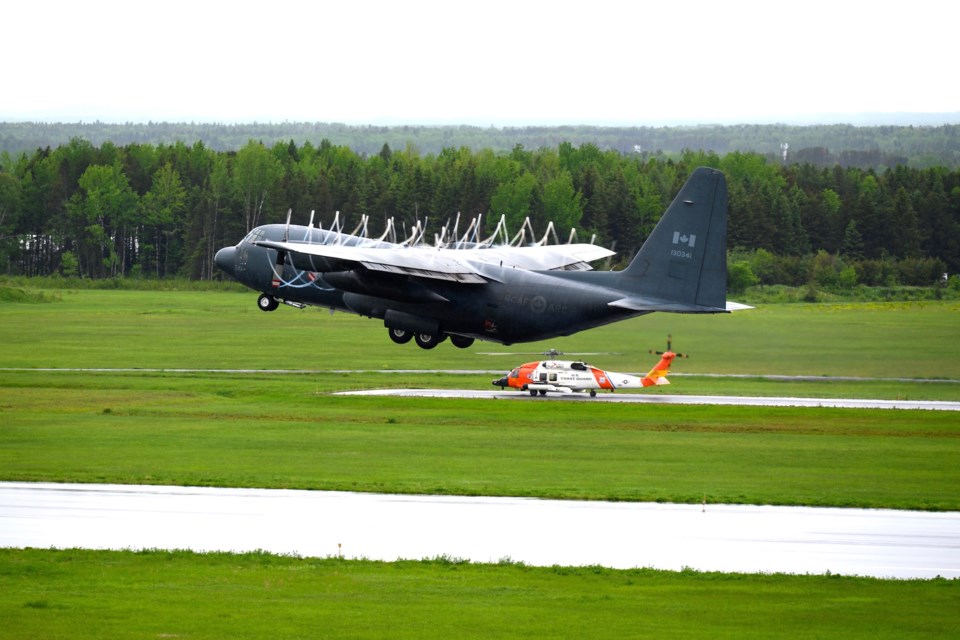Caution: some photos display fake blood and gruesome images of fake injuries for training purposes.
THUNDER BAY — Dozens of military emergency response personnel are in the city for search and rescue (SAR) training, bringing together several agencies from across Canada and the United States.
The 435 Transport and Rescue Squadron, based in Winnipeg, organizes a yearly search and rescue training program known as CHINTHEX.
Members from the Canadian Armed Forces, including air, land, and water squadrons, are in Thunder Bay until June 8. Representatives from the RCMP are participating in the training, as are squadrons from the US Coast Guard, local search and rescue groups, ORNGE Air Ambulance, and more.
Each year, the squadron picks a new location to conduct its yearly training and procedural upgrades. They are in Thunder Bay from June 3 to 8.
While the weather wasn't cooperative for all the training missions around Thunder Bay this year, many were able to proceed, including one on Thursday near Kakabeka Falls.
The scene for this mission was a simulated plane crash with multiple casualties. Walking through a private field, "casualties" were adorned in gruesome makeup that showcased various injuries. They were given special instructions on what their conditions were and how they were to respond.
Major Melissa Gear is a doctor with the squadron and the medical director for search and rescue technicians.
"Part of this exercise is how do we work together as a team, identify those differences and figure out ways to make efficiencies and make things work together," Gear said.
"A lot of times, the local police or RCMP may be on scene at the same time or near the same time as their SAR teams. So they need to be able to work together and practicing in this type of environment is the perfect way to ensure that goes well."
Gear explained the different colour-coded triage levels that incoming para-jumpers use to determine how patients get triaged and prioritized, but it also helps to allocate resources available to the emergency responders,
"Green casualties are able to get up . . . they could have something like a broken arm that looks really bad, but honestly, they're not really in danger medically.
"Yellow is we're worried that in the next hour or two, they could decompensate to not doing very well.
"And our reds are going to be our priority ones that we want to get out as soon as possible."
Gear said patients who are tagged as a red casualty likely have life-threatening injuries.
"That either could be a massive bleed, and we're worried about circulation, or it could be troubles breathing that we might need to think about having a tube down their throat to help them breathe. So they would be a 'red,' which are the first people we want to get out."
However, there are dire situations where responders will need to make tough calls during these types of extreme situations.
"We also have a code black or blue, which is someone who's injured so severely that in a mass casualty scenario, you'll need to make the decision that's not where you're going to put the resources.
"Sometimes in a mass casualty scenario, there might be someone that's so injured you're not going to be able to save them.
"That's a hard call for people to make."
As the rescue teams responded to the situation, the casualties followed their directives and acted the part of an injured, delusional, or unconscious patient.
Various training officers watched and coached the responding para-jumpers while they worked through the problems of each "crash victim."
Eventually a Chinook helicopter landed at the staged scene to complete the extraction mission.
Casualties and personnel were airlifted to "safety" and brought back to the command centre at the Thunder Bay International Airport.
This training also allows equipment to be tested in a safe environment and ensures that all participants are up to date on training and procedural methods. This includes pilots and other supporting responders who may not be medically trained.
The collaboration of the multiple agencies for these search and rescue training missions is crucial for team building, equipment monitoring, and ensuring the safety of those responding while also exercising resource management and prioritizing patient care at incident scenes.
Airfields in Atikokan and Geraldton are also expected to see some SAREX traffic.
